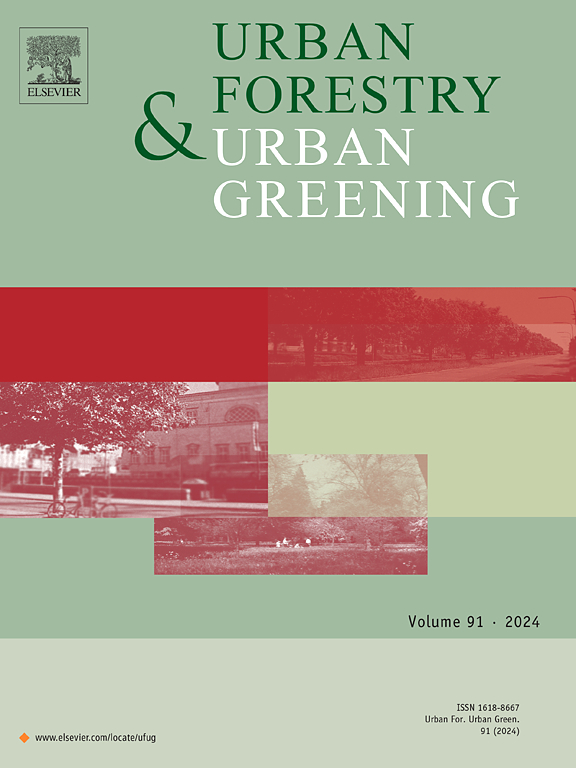Selection of medium-sized, shade-tolerant trees for urban tropical landscapes, Bangkok, Thailand
IF 6
2区 环境科学与生态学
Q1 ENVIRONMENTAL STUDIES
引用次数: 0
Abstract
Urban green spaces are crucial for its residents, particularly in improving their health and providing recreational benefits. Typically, a simple vertical structure of urban trees limits their urban biodiversity and reduces ecosystem services. This study examined the significance of nine medium-sized shade-tolerant tree species in enhancing the urban canopy structure through light response curve modeling. Cluster analysis was used to differentiate the photosynthetic behavior of tree species in relation to variations in light intensity. Clustering was performed based on parameters derived by fitting a non-rectangular hyperbolic model with a linear perturbation term beyond light saturation point. Three distinct groups of light response curves were identified and labeled under saturating, falling, or increasing trends. The results indicated that two native species: Ficus benjamina and Sphaerocoryne lefevrei were light demanding and exhibited an increasing photosynthetic response to light. Meanwhile, Diospyros decandra, Bauhinia purpurea, Guaiacum officinale and Murraya paniculata were categorized as shade-tolerant and could be used for enhancing urban green canopy cover in low-light environments. Calophyllum inophyllum and Gustavia gracillima sequestered the most CO2, as indicated by their highest maximum photosynthetic rates. The findings can be beneficial for urban planners in selecting suitable species to mitigate climate change, while also increasing the biodiversity and ecosystem services for urban residents.
求助全文
约1分钟内获得全文
求助全文
来源期刊

Urban Forestry & Urban Greening
FORESTRY-
CiteScore
11.70
自引率
12.50%
发文量
289
审稿时长
70 days
期刊介绍:
Urban Forestry and Urban Greening is a refereed, international journal aimed at presenting high-quality research with urban and peri-urban woody and non-woody vegetation and its use, planning, design, establishment and management as its main topics. Urban Forestry and Urban Greening concentrates on all tree-dominated (as joint together in the urban forest) as well as other green resources in and around urban areas, such as woodlands, public and private urban parks and gardens, urban nature areas, street tree and square plantations, botanical gardens and cemeteries.
The journal welcomes basic and applied research papers, as well as review papers and short communications. Contributions should focus on one or more of the following aspects:
-Form and functions of urban forests and other vegetation, including aspects of urban ecology.
-Policy-making, planning and design related to urban forests and other vegetation.
-Selection and establishment of tree resources and other vegetation for urban environments.
-Management of urban forests and other vegetation.
Original contributions of a high academic standard are invited from a wide range of disciplines and fields, including forestry, biology, horticulture, arboriculture, landscape ecology, pathology, soil science, hydrology, landscape architecture, landscape planning, urban planning and design, economics, sociology, environmental psychology, public health, and education.
 求助内容:
求助内容: 应助结果提醒方式:
应助结果提醒方式:


